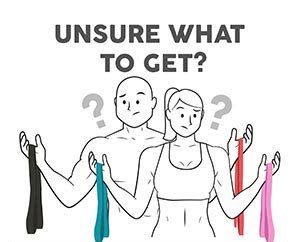According to the National Eating Disorders Association, “in the United States, 20 million women and 10 million men suffer from a clinically significant eating disorder at some time in their life. The list of eating disorders includes anorexia nervosa, bulimia nervosa, binge eating disorder, and an eating disorder not otherwise specified.” The total thirty million people who suffer from an eating disorder becomes SCARY, when you recognize that it has the highest mortality rate of all mental disorders. Eating disorders takes forty percent of victims lives (National Association of Anorexia Nervosa and Associated Disorders). Ultimately, an eating disorder occurs when your diet dictiates your life. In your relationship with food, you are not in control, rather what you consume dictates your thoughts and behaviors to an unhealthy level. There are four main types of eating disorders categorized today. It is important to be aware of each and their symptoms so that we can seek help for ourselves or loved ones if necessary.
Anorexia Nervosa
According to DSM 5 anorexia, the most common eating disorder is defined by:
-
A consistent restriction of energy intake, which can lead to a low body weight that is unhealthy for someone of that age, sex, developmental trajectory, and physical health.
-
Has an obsession of avoiding any type of weight gain
-
Believes they need to lose weight and/or insecure with their body, despite maintaining a low BMI
Bulimia Nervosa
Unlike Anorexia, bulimia is characterized by excessive binge eating and then purging the body from fear of gaining weight. This is usually accomplished through vomiting, laxatives, stimulants, or excessive exercise.
Binge Eating Disorder:
Similar to Bulimia Nervosa, binge eating disorder is when a person inhales a large amount of food and calories. The person may feel that their eating is out of their control. However, unlike bulimia nervosa they will not purge after.
Other Specified Feeding or Eating Disorder
OSFED encompasses other eating disorders that do not meet the criteria for anorexia, bulemia, or binge eating disorders. Examples of eating disorders that may be covered under OSFED include
-
Atypical Anorexia Nervosa: Patients may meet all the other criteria for anorexia such as excessive restriction of calories. However, their BMI remains normal
-
Atypical Bulimia Nervosa: While individual practice the binge and purge patterns of Bulimia nervosa, this only happens less than once a week.
-
Binge Eating disorders in which the binges occur on a less frequent average than once a week
-
Purging disorders such as voluntary vomiting, occur without the prior binge eating
-
Night Eating Syndrome: When individuals eat large percentages of their caloric intake at night or when waking up from sleep. This is past the socially accepted night munchies.
What to do if you suspect a friend has an eating disorder
if you think a loved one may have an eating disorder, the answer is not to yell at them to eat a hamburger. Instead try out some of the tactics we borrowed from the National Eating Disorder Association.
- Set a time to talk. Set aside a time for a private, respectful meeting with your friend to discuss your concerns openly and honestly in a caring, supportive way. Make sure you will be some place away from distractions.
- Communicate your concerns. Share your memories of specific times when you felt concerned about your friend’s eating or exercise behaviors. Explain that you think these things may indicate that there could be a problem that needs professional attention.
- Ask your friend to explore these concerns with a counselor, doctor, nutritionist, or other health professional who is knowledgeable about eating disorders. If you feel comfortable doing so, offer to help your friend make an appointment or accompany your friend on their first visit.
- Avoid conflicts or a battle of wills with your friend. If your friend refuses to acknowledge that there is a problem, or any reason for you to be concerned, restate your feelings and the reasons for them and leave yourself open and available as a supportive listener.
- Avoid placing shame, blame, or guilt on your friend regarding their actions or attitudes. Do not use accusatory “you” statements such as, “You just need to eat.” Or, “You are acting irresponsibly.” Instead, use “I” statements. For example: “I’m concerned about you because you refuse to eat breakfast or lunch.” Or, “It makes me afraid to hear you vomiting.”
- Avoid giving simple solutions. For example, “If you’d just stop, then everything would be fine!”
- Express your continued support.Remind your friend that you care and want your friend to be healthy and happy.
- After talking with your friend, if you are still concerned with their health and safety, find a trusted adult or medical professional to talk to. This is probably a challenging time for both of you. It could be helpful for you, as well as your friend, to discuss your concerns and seek assistance and support from a professional.



